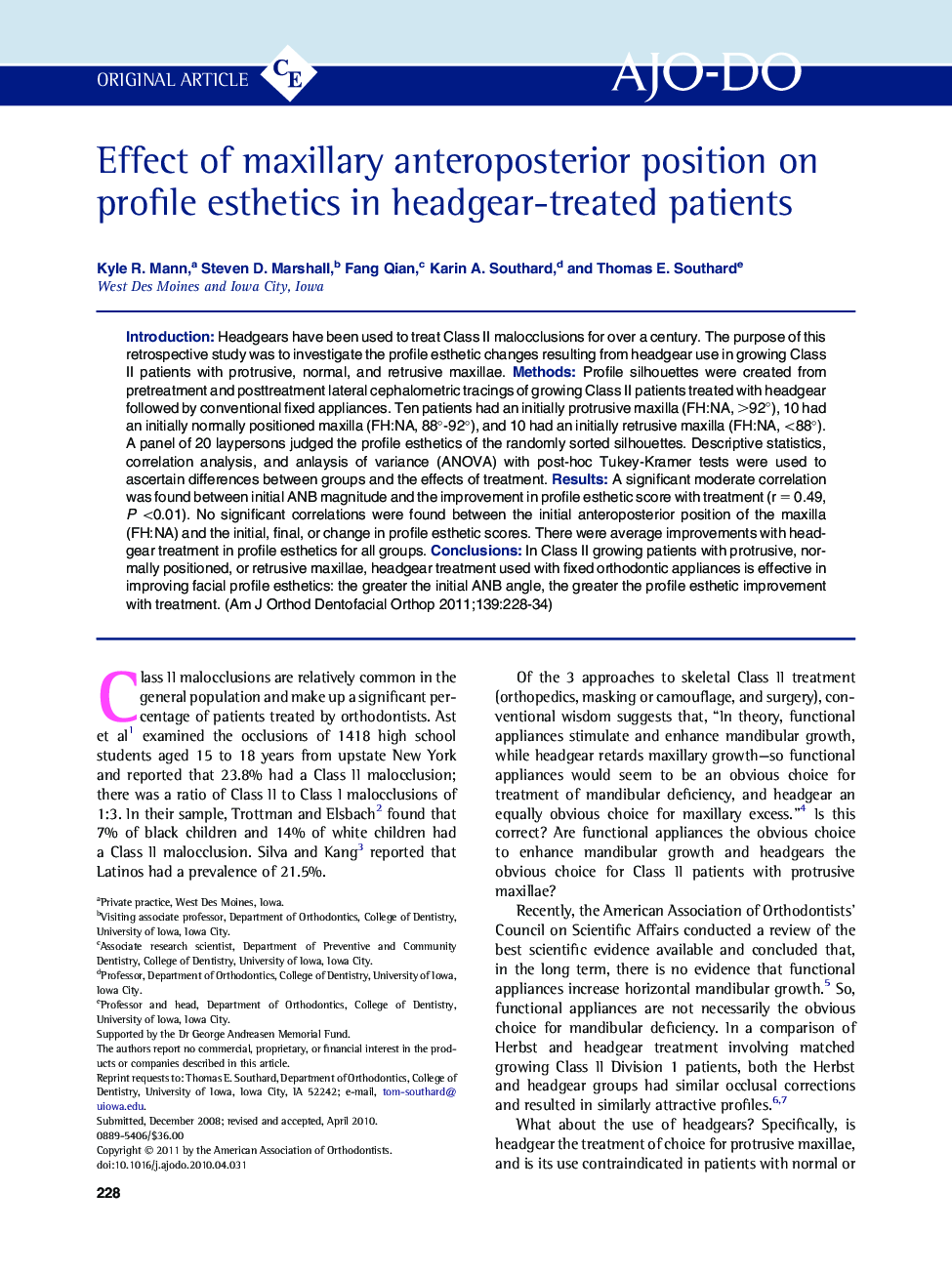| Article ID | Journal | Published Year | Pages | File Type |
|---|---|---|---|---|
| 3117806 | American Journal of Orthodontics and Dentofacial Orthopedics | 2011 | 7 Pages |
IntroductionHeadgears have been used to treat Class II malocclusions for over a century. The purpose of this retrospective study was to investigate the profile esthetic changes resulting from headgear use in growing Class II patients with protrusive, normal, and retrusive maxillae.MethodsProfile silhouettes were created from pretreatment and posttreatment lateral cephalometric tracings of growing Class II patients treated with headgear followed by conventional fixed appliances. Ten patients had an initially protrusive maxilla (FH:NA, >92°), 10 had an initially normally positioned maxilla (FH:NA, 88°-92°), and 10 had an initially retrusive maxilla (FH:NA, <88°). A panel of 20 laypersons judged the profile esthetics of the randomly sorted silhouettes. Descriptive statistics, correlation analysis, and anlaysis of variance (ANOVA) with post-hoc Tukey-Kramer tests were used to ascertain differences between groups and the effects of treatment.ResultsA significant moderate correlation was found between initial ANB magnitude and the improvement in profile esthetic score with treatment (r = 0.49, P <0.01). No significant correlations were found between the initial anteroposterior position of the maxilla (FH:NA) and the initial, final, or change in profile esthetic scores. There were average improvements with headgear treatment in profile esthetics for all groups.ConclusionsIn Class II growing patients with protrusive, normally positioned, or retrusive maxillae, headgear treatment used with fixed orthodontic appliances is effective in improving facial profile esthetics: the greater the initial ANB angle, the greater the profile esthetic improvement with treatment.
